How to Disinfect Your Laundry When Someone’s Sick


First, Grab Your Gloves
Before you touch a sick person’s laundry, pull on a pair of disposable gloves. Once the clothes and linens are in the washing machine, take the gloves off, put them in the trash, and wash your hands again right away. Wash your hands again and put on a fresh pair before you move the clean items to the dryer or hang them to dry so that you don’t reinfect them.
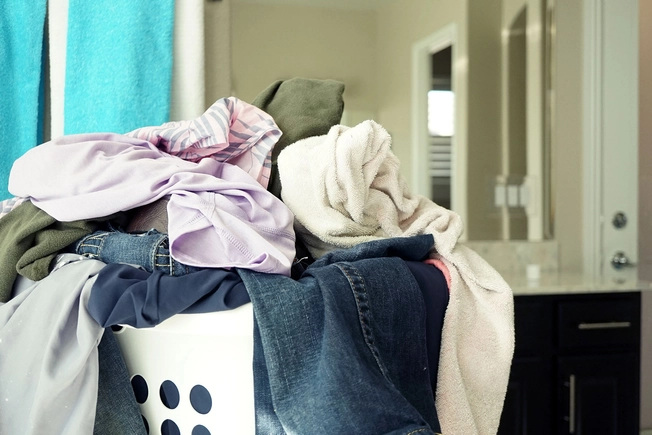
Sanitize Storage
You’ll want to disinfect every surface that the sick person’s laundry has touched, such as shelves, counters, or hampers. The sick person should have their own dirty clothes bin. If the hamper is made of hard materials, apply soap and water to cut dirt and germs. Then wipe or spritz with disinfectant to kill any microbes left over. Place a washable or disposable bag liner in the hamper to keep germs at bay from the inside.

Clean + Disinfect = Two Steps
Cleaning and disinfecting are a one-two punch. After the soap and water, use store-bought disinfectant wipes on surfaces. Or apply an EPA-registered household disinfectant directly. (To find out if a product is registered, look for “EPA Reg. No.” followed by numbers on the label). Carefully follow the directions, and know how long you should leave the area wet before you wipe it dry, or if it’s OK to just let the disinfectant evaporate.

Reach for Bleach
Household bleach also can sanitize your laundry area. Make sure that it’s intended as a disinfectant and that it’s not past its expiration date. Some types, such as the kind made to brighten or whiten clothes, might not work for this task. Add ⅓ cup, or 5 tablespoons, of bleach per gallon of water. Or use 4 teaspoons of bleach per quart. You also can use a ready-made solution that has at least 70% alcohol. Don’t forget your gloves!
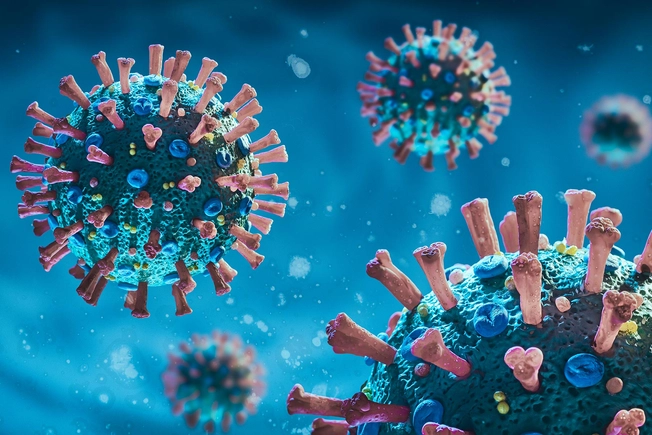
Do Not Shake
You might be tempted to give the hamper or clothes basket a little jiggle to help settle the contents. Don’t shake or shift soiled laundry any more than necessary. When dirty clothes are riled up, viral particles can get tossed into the air.
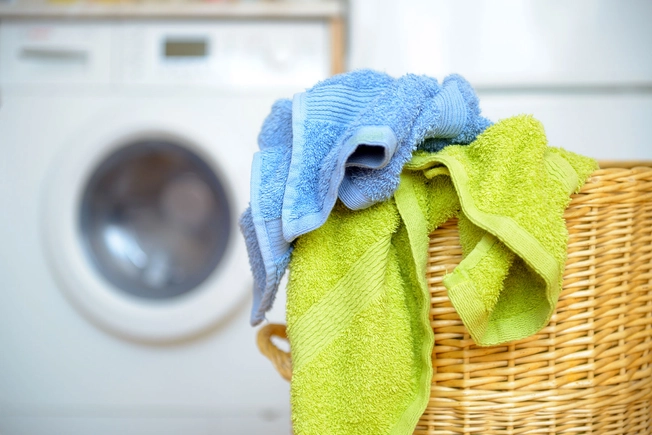
Mix and Mingle
It’s OK to toss in other household laundry items with the sick person’s load. If you’re going through the steps correctly, you don’t have to separate it. Just follow the washing instructions as usual. If your hamper bag is fabric, toss it in too. Tip: Do wash heavier items like towels separately. This will help preserve finer fabrics and help your loads dry more evenly.
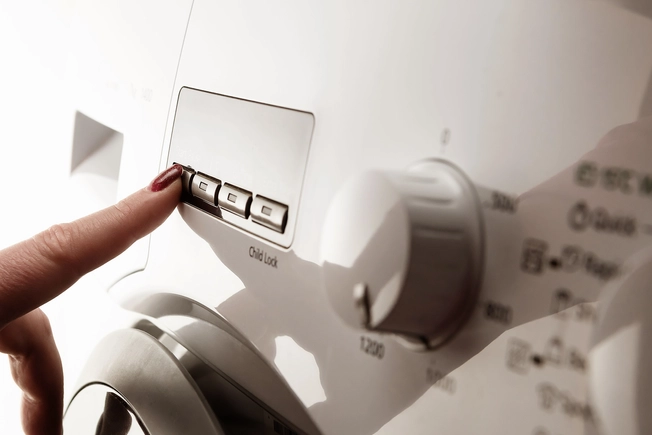
Hot Water Alone Won’t Cut It
Whether it be mold, a virus, or something else, whatever triggered the illness can likely survive a hot wash cycle. A disinfectant, such as chlorine bleach, added to your load does a much better job getting rid of pathogens. Still, hot water can’t hurt. Use the warmest water setting the items can take, and wash them according to the maker’s instructions.

How to Use Chlorine Bleach
First, check the symbols on laundry items to see if it’s OK to use bleach in your load. An empty triangle means go for it. An “X” marked through means “don’t.” And a triangle with diagonal stripes means you should use oxygen, or “color-safe,” bleach. Use ¾ cup of chlorine bleach for a regular-sized load with an average amount of soil. Use 1¼ cups of chlorine bleach if your load is extra-large or heavily soiled.
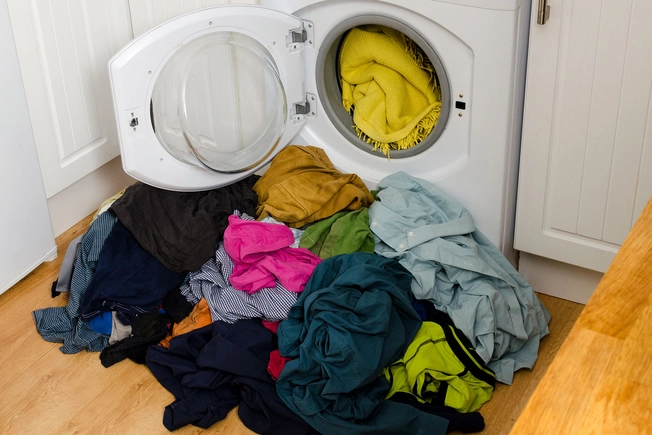
Don’t Overload
Laundry items need room to tumble and swish around through the water to get clean. This can’t happen if your washer is overloaded. Though you may be tempted to stuff it all into one load and get it over with, it’s worth it to take time to divide it and run two. Don’t forget to remove your gloves and wash your hands after you load the washer.
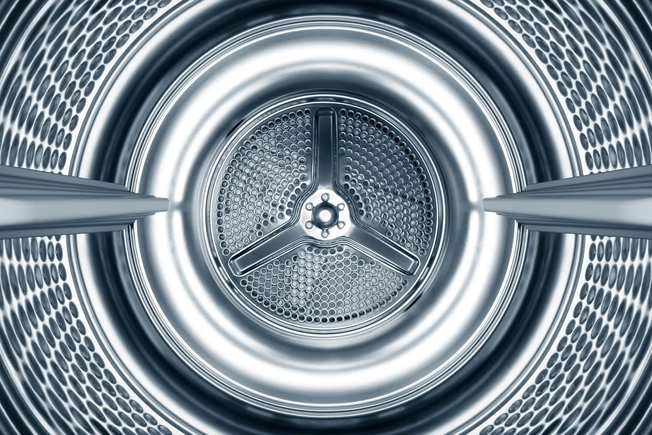
Clean Your Washer
Did you know you need to wash your washer? It’s especially important if you have a sick person in your home. It’s easy if your machine has a “clean washer” cycle. If it doesn’t, do this:
- Set the temperature on hot, and select “extra rinse.”
- Add ½ cup regular bleach -- it’s 6% strength -- to the bleach dispenser, or fill it to “max-fill.”
- Run the cycle with the washer empty.
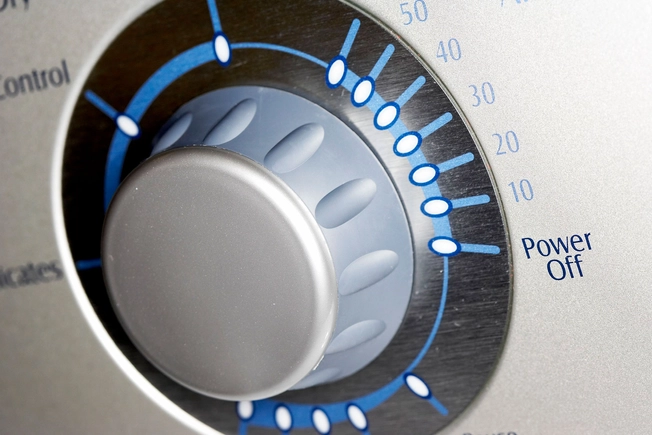
Dryer Power
What’s better than using chlorine bleach in your wash cycle? Following it up with heat. This isn’t the time to use energy-efficient settings, which use lower temperatures that don’t sanitize. Set your dryer load for at least 28 minutes of high heat to finish disinfecting it.
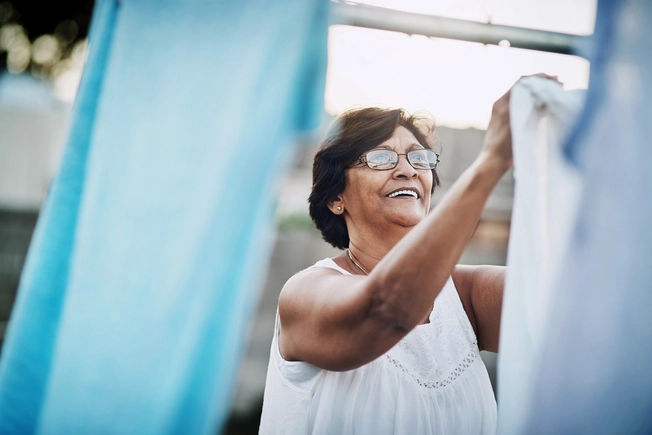
Hang It Out to Dry
If you don’t have a dryer, or you like to line-dry, rest assured that hanging laundry outside in direct sunlight is an excellent way to help sanitize: The ultraviolet rays from the sun bring disinfecting superpowers to your laundry. Make sure you’ve wiped down the baskets or containers you’ll use to collect the fresh clothing. Wash your hands one last time before you put everything away.